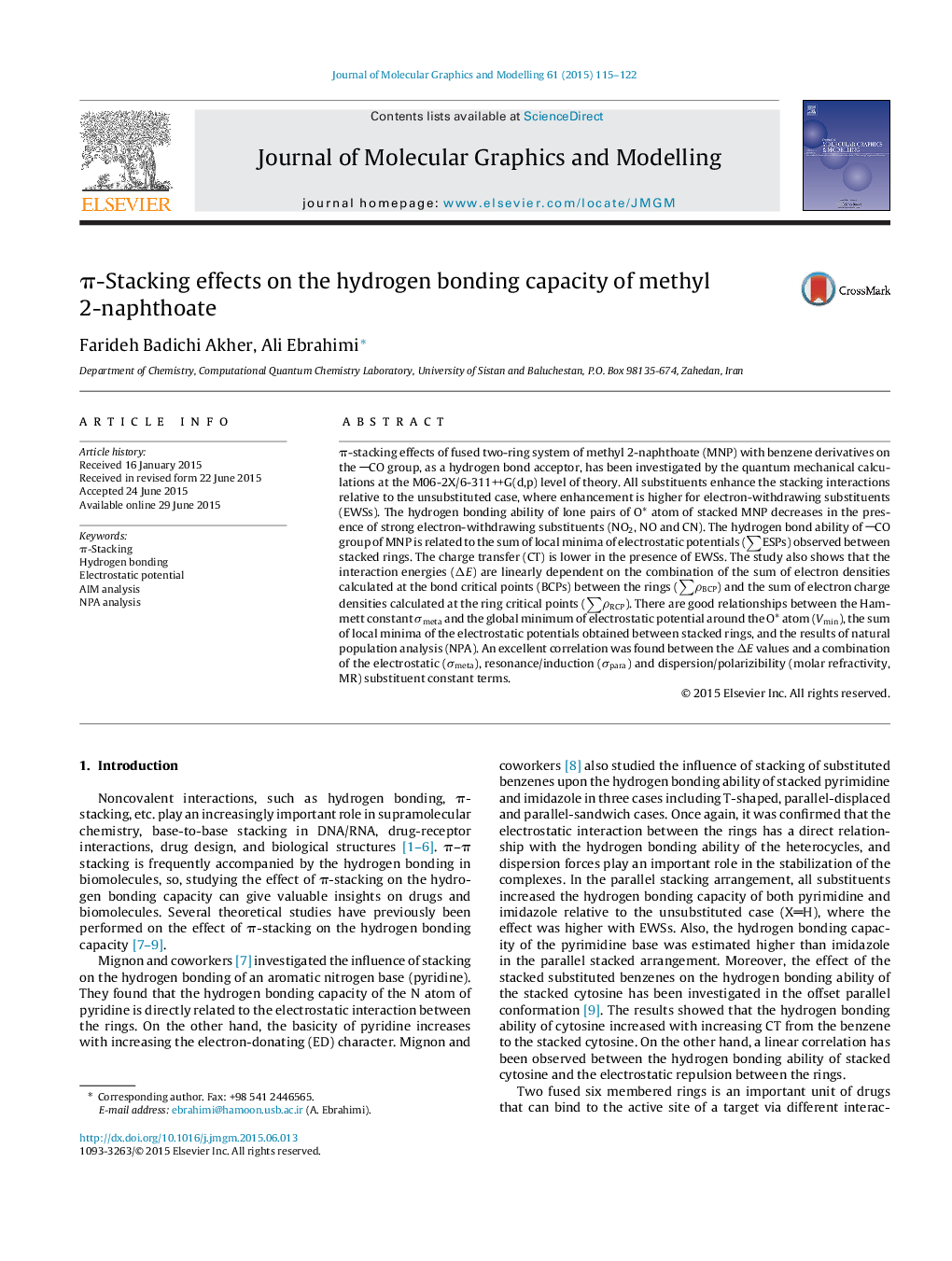| Article ID | Journal | Published Year | Pages | File Type |
|---|---|---|---|---|
| 443457 | Journal of Molecular Graphics and Modelling | 2015 | 8 Pages |
•Interplay between π-stacking and hydrogen bond interactions in the fused two-ring system (methyl 2-naphthoate) have been evaluated by computational quantum chemistry methods.•All substituents enhance the stacking interactions relative to the unsubstituted case, where enhancement is higher for electron-withdrawing substituents.•The hydrogen bonding ability of lone pairs of O* atom of stacked MNP decreases in the presence of strong electron-withdrawing substituents (NO2, NO and CN).•Two correlation equations were found for prediction of the ΔE values of the binary stacked Ph-X||MNP complexes, one based on the combination of the σmeta, σpara, and MR values and another based on the topological properties of electron charge density.•The H-bonding ability can be related to the sum of local minima of ESPs calculated between rings in the binary stacked Ph-X||MNP complexes.
π-stacking effects of fused two-ring system of methyl 2-naphthoate (MNP) with benzene derivatives on the CO group, as a hydrogen bond acceptor, has been investigated by the quantum mechanical calculations at the M06-2X/6-311++G(d,p) level of theory. All substituents enhance the stacking interactions relative to the unsubstituted case, where enhancement is higher for electron-withdrawing substituents (EWSs). The hydrogen bonding ability of lone pairs of O* atom of stacked MNP decreases in the presence of strong electron-withdrawing substituents (NO2, NO and CN). The hydrogen bond ability of CO group of MNP is related to the sum of local minima of electrostatic potentials (∑ESPs) observed between stacked rings. The charge transfer (CT) is lower in the presence of EWSs. The study also shows that the interaction energies (ΔE) are linearly dependent on the combination of the sum of electron densities calculated at the bond critical points (BCPs) between the rings (∑ρBCP) and the sum of electron charge densities calculated at the ring critical points (∑ρRCP). There are good relationships between the Hammett constant σmeta and the global minimum of electrostatic potential around the O* atom (Vmin), the sum of local minima of the electrostatic potentials obtained between stacked rings, and the results of natural population analysis (NPA). An excellent correlation was found between the ΔE values and a combination of the electrostatic (σmeta), resonance/induction (σpara) and dispersion/polarizibility (molar refractivity, MR) substituent constant terms.
Graphical abstractFigure optionsDownload full-size imageDownload high-quality image (110 K)Download as PowerPoint slide
